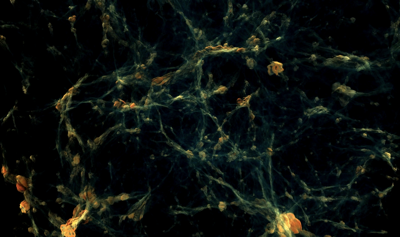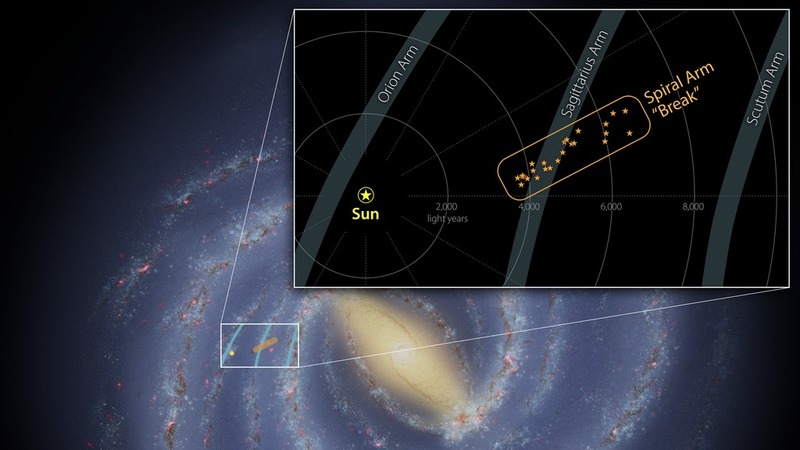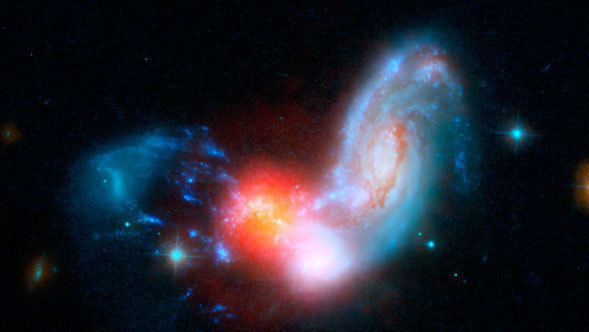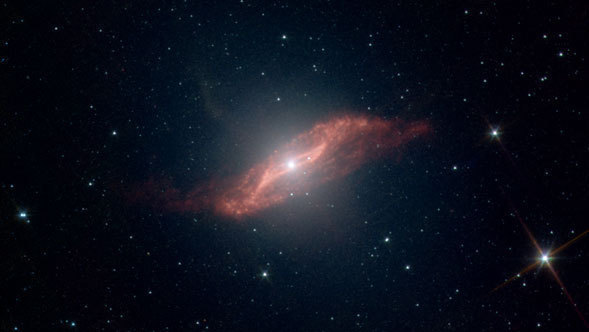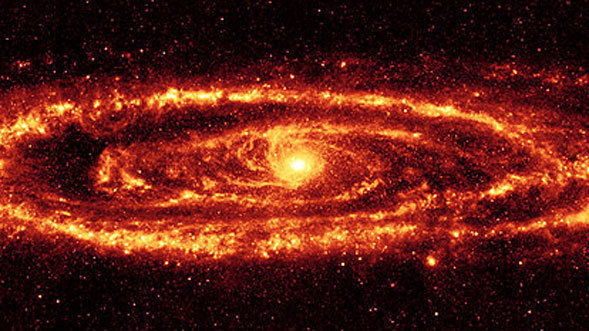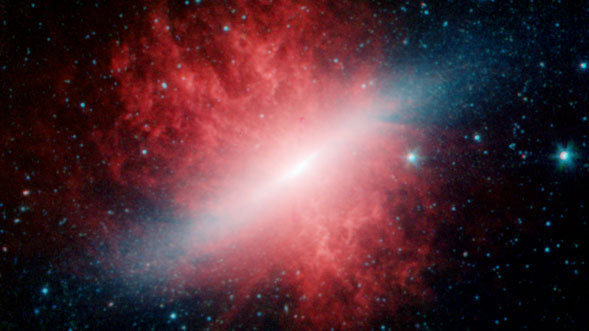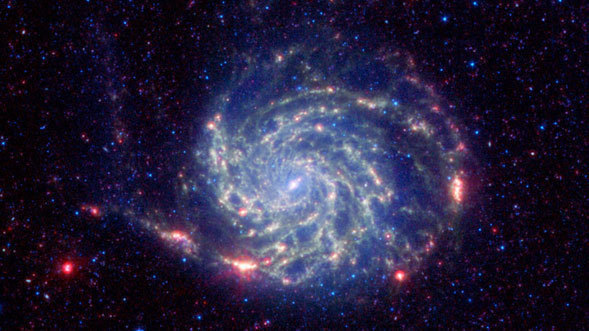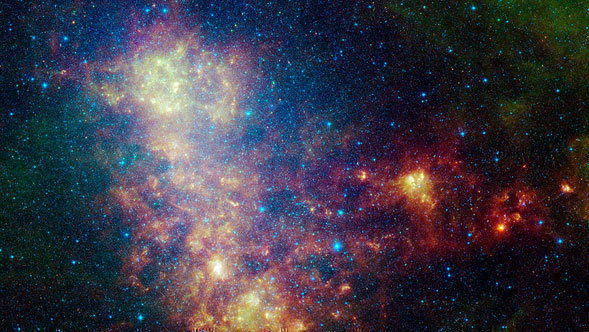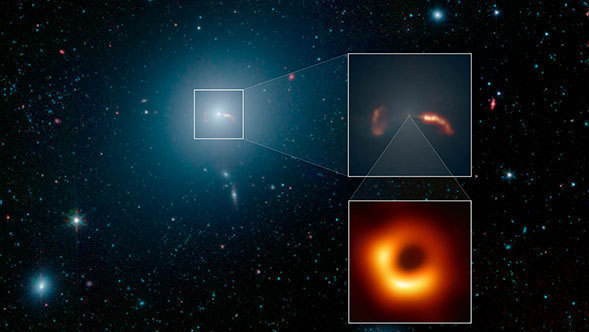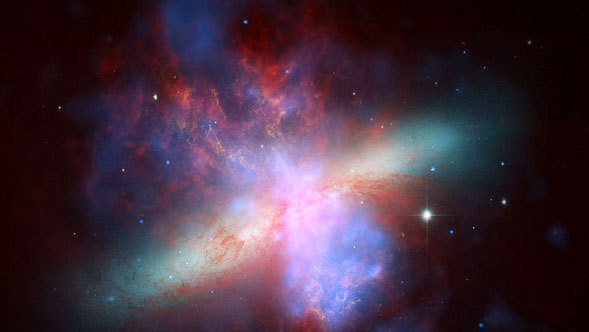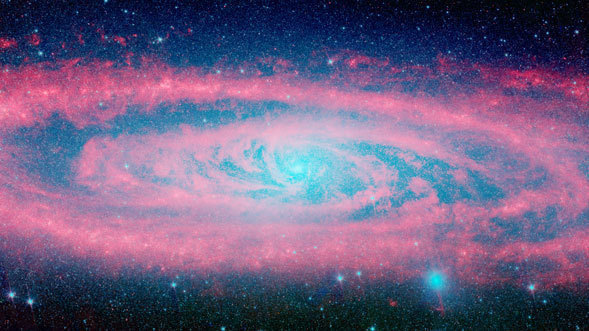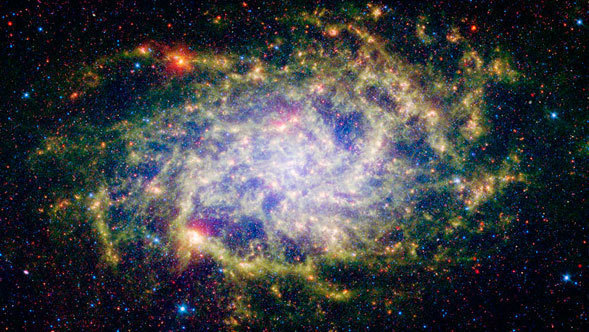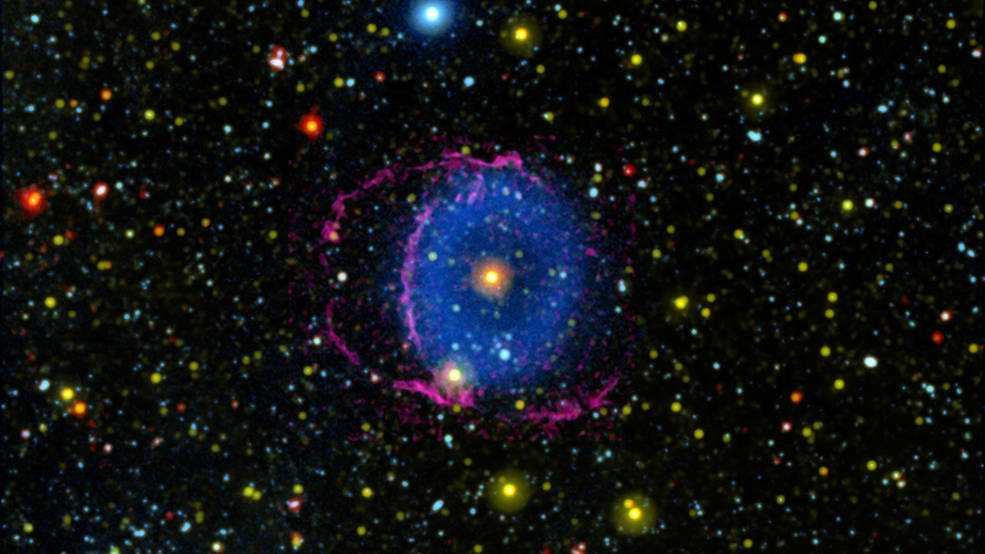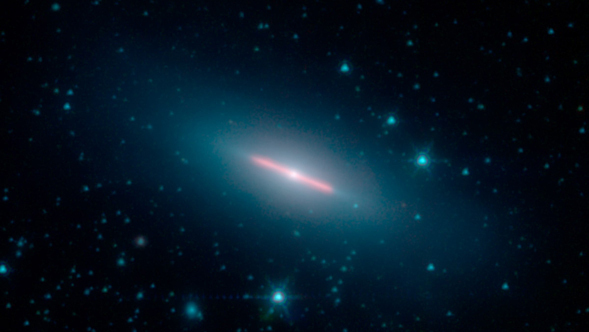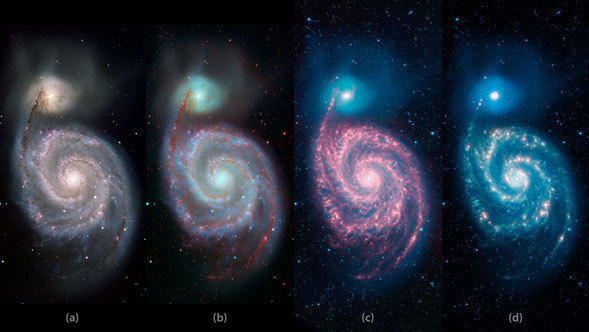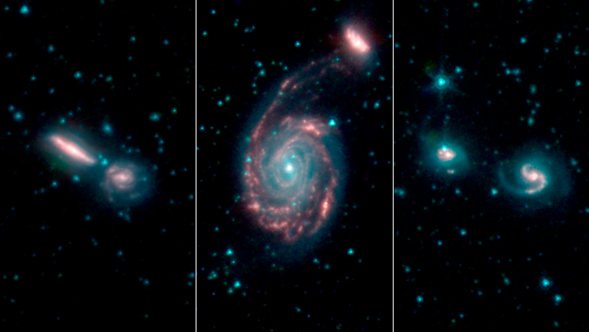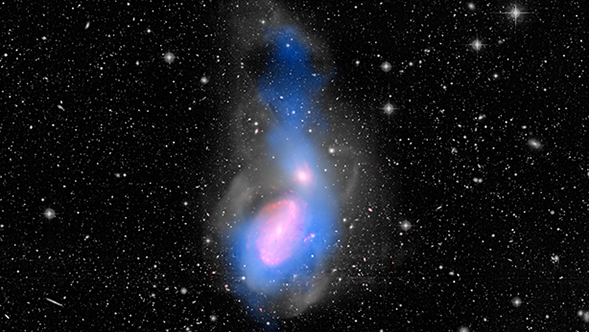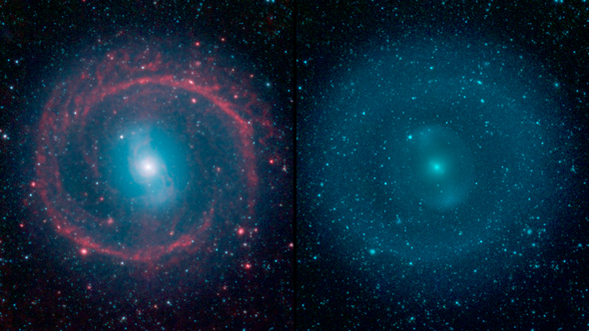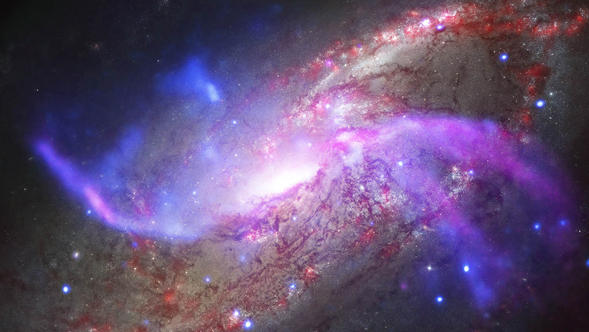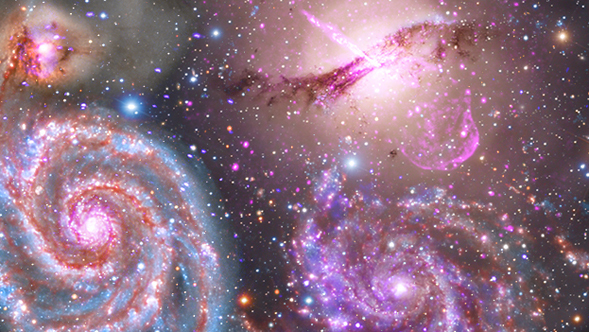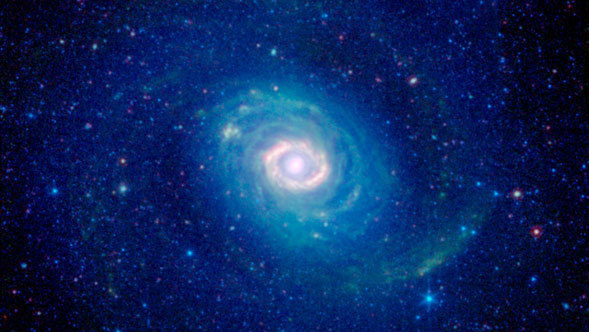We live within the Milky Way galaxy, a flattened disk of hundreds of billions of other stars, but the Milky Way is but one of trillions of galaxies that fill the observable universe. Spitzer’s infrared vision has helped us to more completely understand these immense objects that come in many shapes and sizes.
In the local universe Spitzer has traced out the underlying populations of stars within galaxies that range from cosmic pinwheels to nearly featureless beehives, and mapped the complex patterns of dust that propagate through many of them.
Cosmic dawn, when stars formed for the first time, occurred 250 million to 350 million years after the beginning of the universe, according to a new study led by researchers at UC Santa Cruz, the University College London, and the University of Cambridge.
In images from NASA's retired Spitzer Space Telescope, streams of dust thousands of light-years long flow toward the supermassive black hole at the heart of the Andromeda galaxy. It turns out these streams can help explain how black holes billions of times the mass of our Sun satiate their big appetites but remain "quiet" eaters.
The newly discovered feature offers insight into the large-scale structure of our galaxy, which is difficult to study from Earth’s position inside it.
Astronomers using NASA's Spitzer Space Telescope have found a stunning burst of star formation that beams out as much infrared light as an entire galaxy.
Peering into the "gut" of the galaxy Centaurus A, NASA's Spitzer Space Telescope has captured in unprecedented detail this massive galaxy's last big meal: a spiral galaxy twisted into a parallelogram-shaped structure of dust.
NASA's Spitzer Space Telescope has captured a stunning infrared view of Messier 31, the famous spiral galaxy also known as Andromeda.
Where there's smoke, there's fire -- even in outer space. A new infrared image from NASA's Spitzer Space Telescope shows a burning hot galaxy whose fiery stars appear to be blowing out giant billows of smoky dust.
The Pinwheel galaxy is gussied up in infrared light in a new picture from NASA's Spitzer Space Telescope.
NASA's Spitzer Space Telescope has captured an action-packed picture of the nearby Small Magellanic Cloud, a small galaxy that looks like a wispy cloud when seen from Earth.
On April 10, 2019, the Event Horizon Telescope (EHT) unveiled the first-ever image of a black hole's event horizon, the area beyond which light cannot escape the immense gravity of the black hole. That giant black hole, with a mass of 6.5 billion Suns, is located in the elliptical galaxy Messier 87 (M87). EHT is an international collaboration whose support in the U.S. includes the National Science Foundation.
While some galaxies are rotund and others are slender disks like our spiral Milky Way, new observations from NASA's Spitzer Space Telescope show that the Sombrero galaxy is both.
NASA's Spitzer, Hubble, and Chandra space observatories teamed up to create this multi-wavelength, false-colored view of the M82 galaxy. The lively portrait celebrates Hubble's "sweet sixteen" birthday.
The Andromeda galaxy, named for the mythological princess who almost fell prey to a sea monster, appears tranquil in a new image from NASA's Spitzer Space Telescope. The mesmerizing infrared mosaic shows red waves of dust over a blue sea of stars.
This new image of the Triangulum galaxy is being released as part of the 'Around the World in 80 Telescopes' event for the International Year of Astronomy.
A new image from NASA's Spitzer Space Telescope is helping astronomers understand how stardust is recycled in galaxies.
The Blue Ring Nebula, which perplexed scientists for over a decade, appears to be the youngest known example of two stars merged into one.
It might look like a lightsaber floating in space, but the red beam in the middle of this image is actually a galaxy seen edge-on.
Unlike Andy Warhol's famous silkscreen grids of repeating images rendered in different colors, the varying hues of this galaxy represent how its appearance changes in different wavelengths of light - from visible light to the infrared light seen by NASA's Spitzer Space Telescope.
Three images from NASA's Spitzer Space Telescope show pairs of galaxies on the cusp of cosmic consolidations. Though the galaxies appear separate now, gravity is pulling them together, and soon they will combine to form new, merged galaxies.
One galaxy devoured remnants of another galaxy, quenching the formation of new stars.
It might look like a spoked wheel or even a "Chakram" weapon wielded by warriors like "Xena," from the fictional TV show, but this ringed galaxy is actually a vast place of stellar life. A newly released image from NASA's Spitzer Space Telescope shows the galaxy NGC 1291.
Celebrants this Fourth of July will enjoy the dazzling lights and booming shock waves from the explosions of fireworks. A similarly styled event is taking place in the galaxy Messier 106, as seen by NASA's Spitzer Space Telescope, Chandra X-ray Observatory and the Herschel Space Observatory.
Long before the term "citizen science" was coined, the field of astronomy has benefited from countless men and women who study the sky in their own time.
This galaxy's ring of fire "burns, burns, burns" with young stars.
